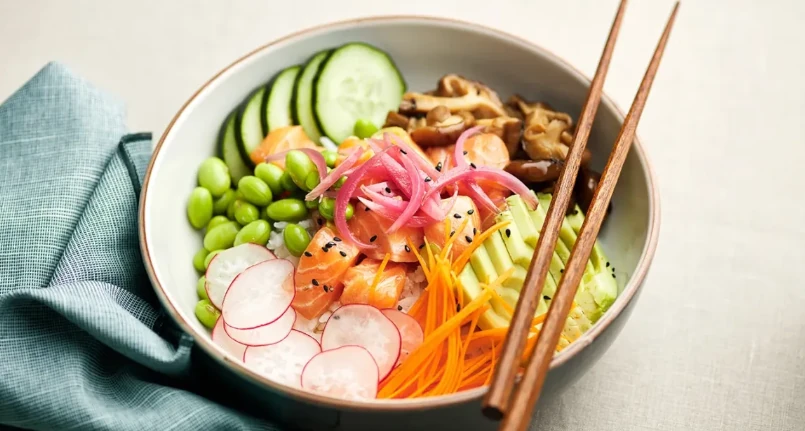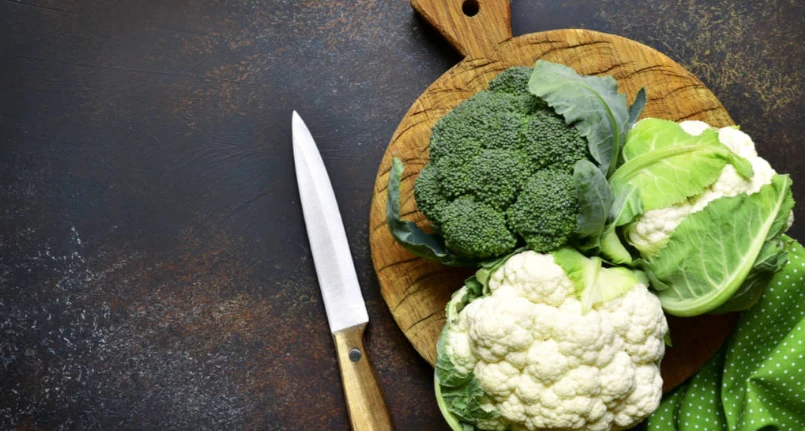Introduction
Did you know that…
While the poké is freshly seasoned, the traditional Hawaiian one is left to flavor before consumption with all the ingredients, as if it were a kind of marinade.
There are two traditional versions of Hawaiian poké and they differ in the main ingredient: Aku poke , made with skipjack tuna , and He’e poke , made with octopus .
Beneficial properties of the ingredients
Pokè can be a complete, balanced and really healthy dish. This depends on the ingredients with which it is prepared, which obviously must respect health needs, and not just the preferences of the palate . Poke bowls consist primarily of nutrient -dense , highly customizable foods . The main ingredients are vegetables and fish, two generally nutritious foods . Some of the more common veggies used in poke are avocado, garlic, onion, and carrots , which are packed with vitamins, minerals , fiber, and antioxidants , which support overall health.
Fish are a good source of protein and unsaturated omega – 3 fatty acids , which are important for brain function, heart health and reducing inflammation . That said, poke bowls are usually created using a base of white rice , a highly processed grain that’s low in fiber. If consumed in excess, having a high glycemic index , it can increase the risk of type 2 diabetes . In this sense, it could be a better alternative to replace white rice with basmati rice , brown type or other bases rich in fiber such as quinoa , barleyor “cauliflower rice”.
Sodium and calories: the cons of Pokè
Poké can also be very unbalanced in terms of nutrients, if prepared with ingredients that are excessively rich in sodium and calories. Poke bowls are traditionally drizzled with sesame oil , which is high in calories, and generous helpings of soy sauce , which is usually high in sodium . Although sodium is an essential nutrient, it can raise blood pressure and the risk of heart disease in some people when consumed in excess.
Raw fish: caution in consumption
In general, consumption of raw fish should always be moderate and with caution due to the risk of foodborne pathogens , such as Salmonella, which can be present in raw animal products. Additionally, some fish tend to be high in mercury , a heavy metal that can have toxic effects on the nervous system . Mercury-rich fish include: bluefin tuna, swordfish and king mackerel . Children and pregnant and lactating women and immunocompromised people should avoid eating raw fish or species that tend to be high in mercury.
Few bowls: how to prepare them in a healthy way
It’s very easy to prepare a poke bowl that can accommodate dietary and health preferences. For example, you may want to make it more low-calorie by including a larger serving of vegetables and using less oil and soy sauce . You can also replace the white rice base with whole grains like barley or quinoa or a grain-free alternative like zucchini spirals , noodles , edamame or seaweed salad .
While poke bowls are generally made with fish, it’s also possible to create vegan bowls that don’t involve the use of animal products. Instead, you can add protein-rich tofu, tempeh, or seitan made from cooked wheat gluten . Alternatively, you may choose to include a fish that is generally low in mercury, such as salmon, cod or trout , but also prawns or prawns . The bowls are also a great excuse to include fermented foods like pickled vegetables or sauerkraut . Fermented foods are rich in probioticsnaturals that may offer gut health benefits , help fight inflammation and boost the immune system .




